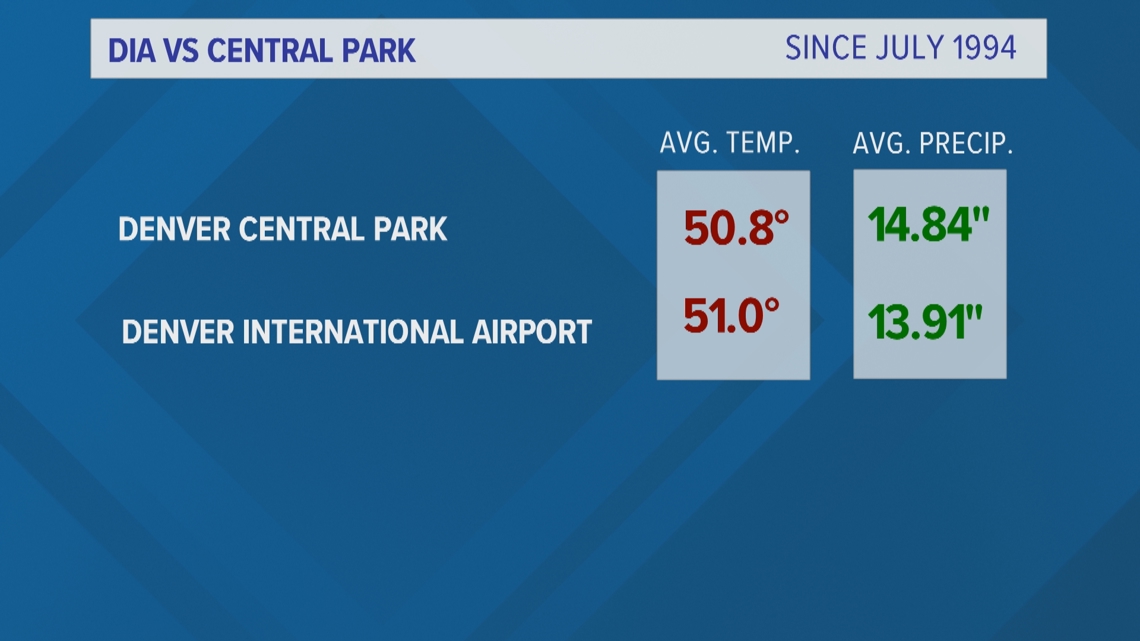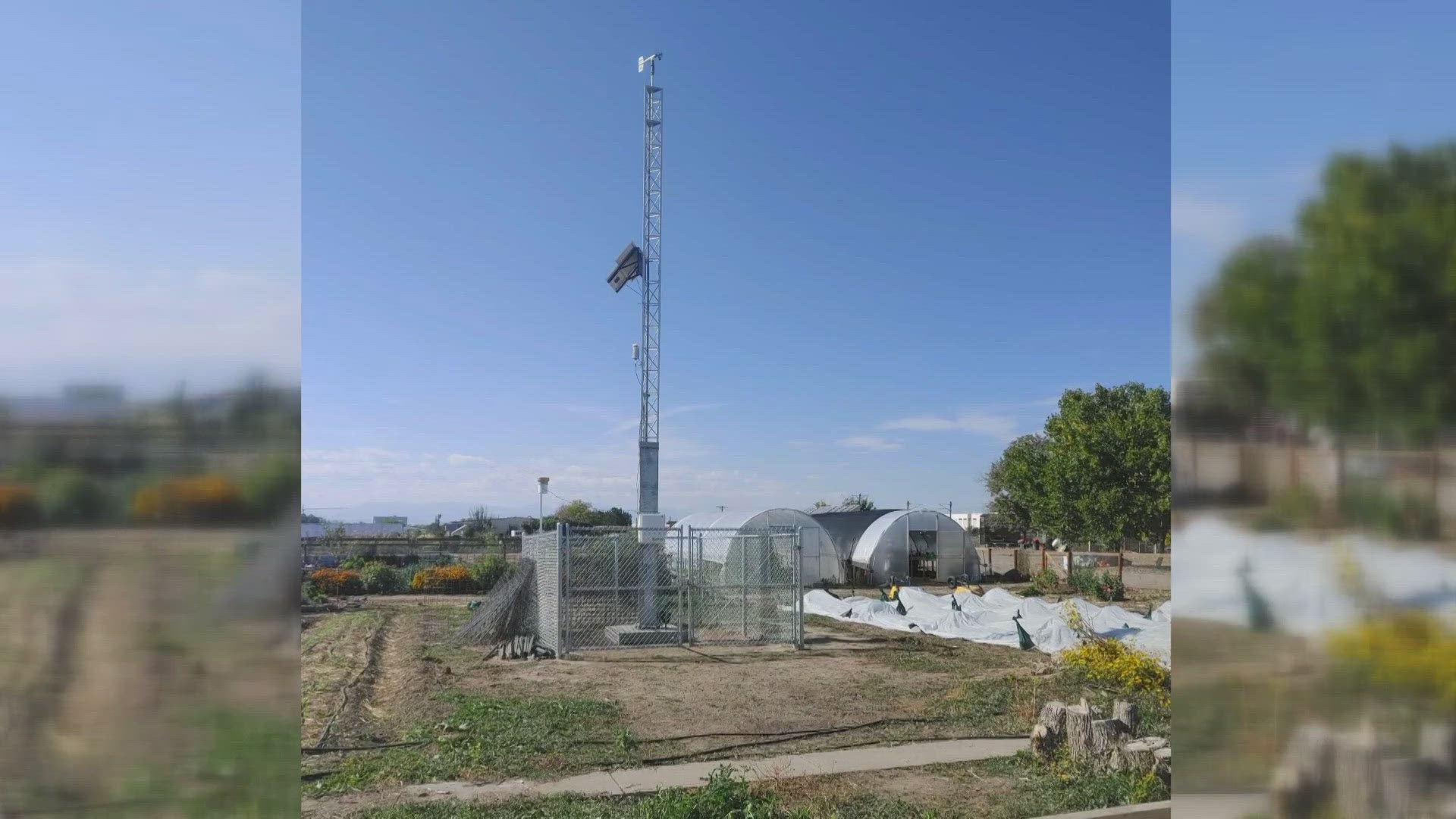DENVER — For the past 30 years, the only official National Weather Service weather station for the city of Denver has been at Denver International Airport -- where the weather on any given day can be drastically different than the weather near downtown, 12 miles away.
Now, a new station in Denver Central Park will better represent the core population of the city. Located near Smith Road and Havana Street, the station is only six miles from downtown.
"There has been a cooperative weather station in Central Park since 1994, but that was just to maintain the climate record which began at that location in 1948," NWS meteorologist Paul Schlatter said. “It could only report the daily high and low along with the total precipitation for the day."
He said the new weather station is a significant upgrade and will transmit more data, like wind speed and gusts, rainfall, temperature and relative humidity, every 10 minutes.
Schlatter said the new weather station will more accurately tell the day-to-day weather story in Denver, but the official climate record will stay with the station at DIA.
For example, let’s say Denver’s record high for a day is 75 degrees. And let's say it hits 76 degrees at the new Central Park station but only 74 at DIA. The 76-degree temp might better show how warm it was for most Denver residents, but there will be no official record broken because DIA would be the official temperature of record.
Interestingly enough, while the 12 miles can make a world of difference in the weather on any given day, the 12-mile distance has very little impact on a long-term climate record.


Over the past 30 years, the climate records at Central Park and Denver International Airport have been very similar, especially when it comes to temperature.
“The average temperature is within a degree, basically," Schlatter said. "It’s because on the hottest days it's just a tiny bit hotter at DIA, and on the coldest days it's just a little bit colder at DIA, so it just washes out when you average it all out.”
He also noted that DIA has almost established its own 30-year climate record now, so it would be a good time to start citing records for both stations independently instead of using a combined Denver record which includes DIA from 1994-present, Stapleton Airport from 1948-1994 and several downtown locations from 1872-1947.
SUGGESTED VIDEOS: Colorado Weather

